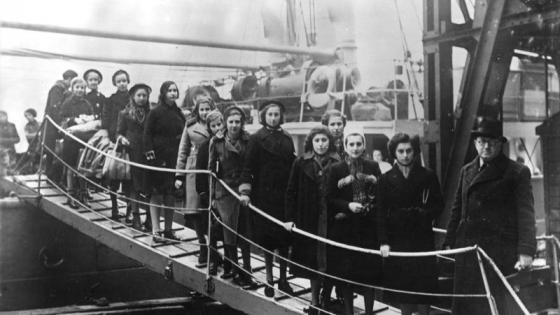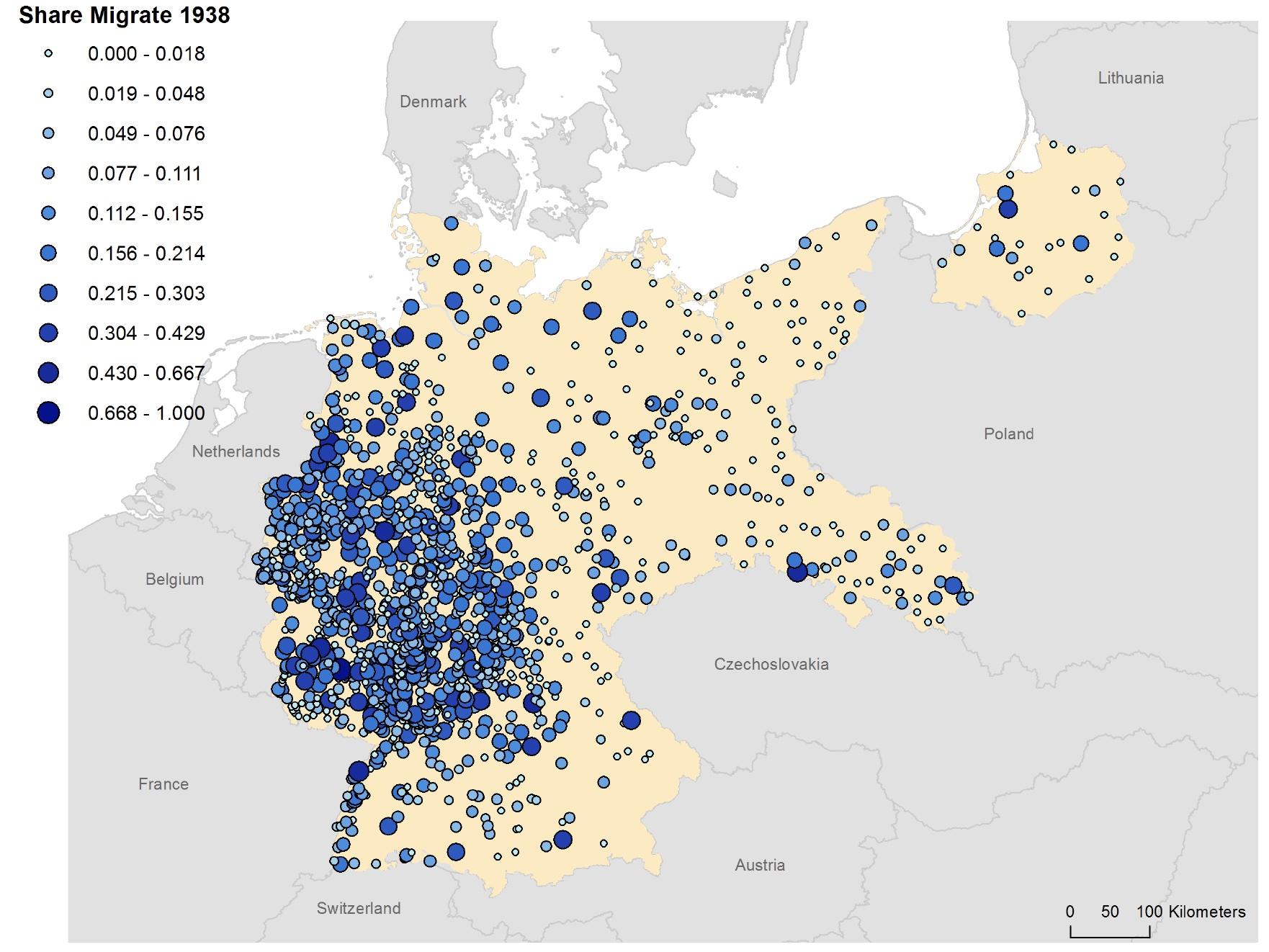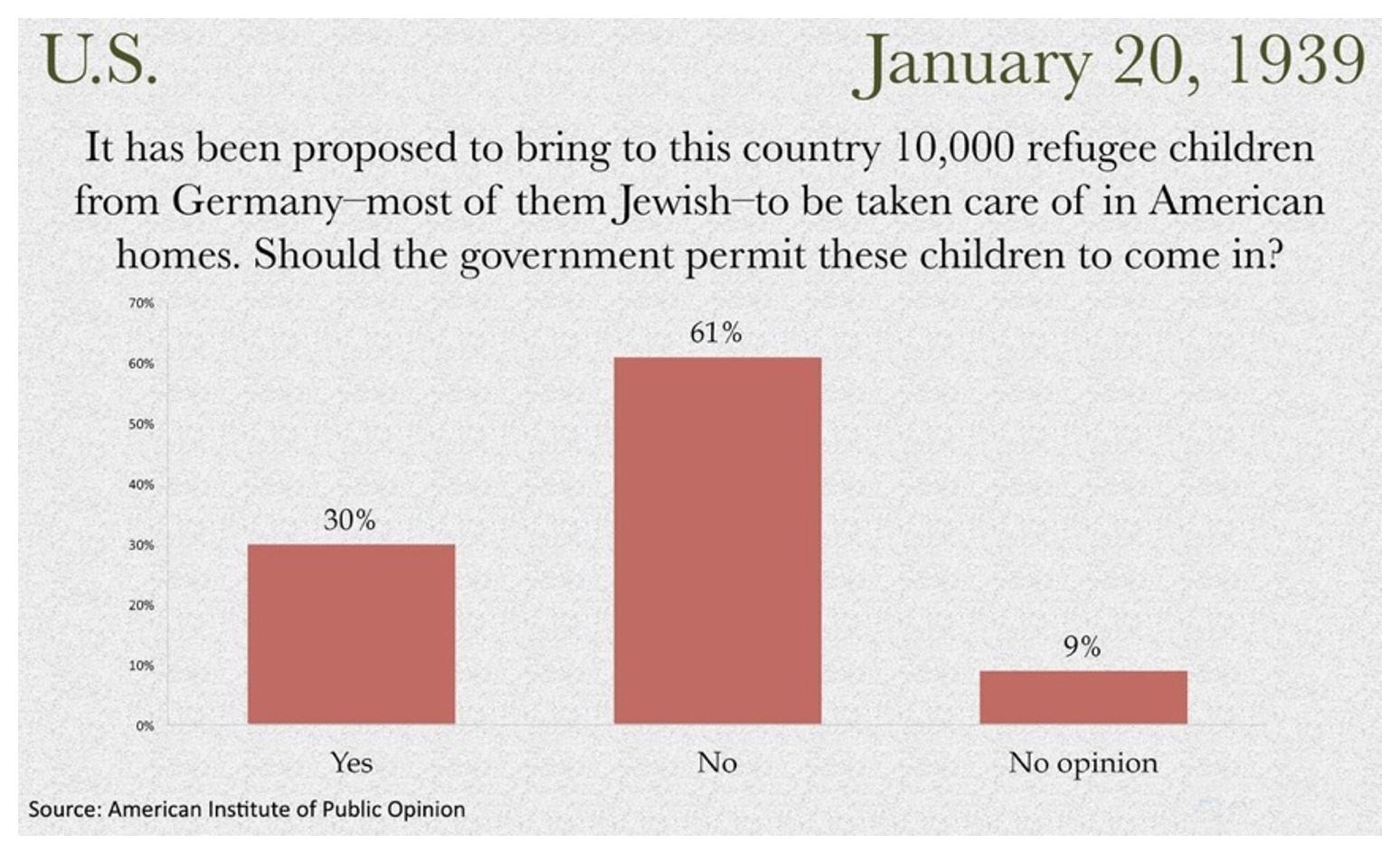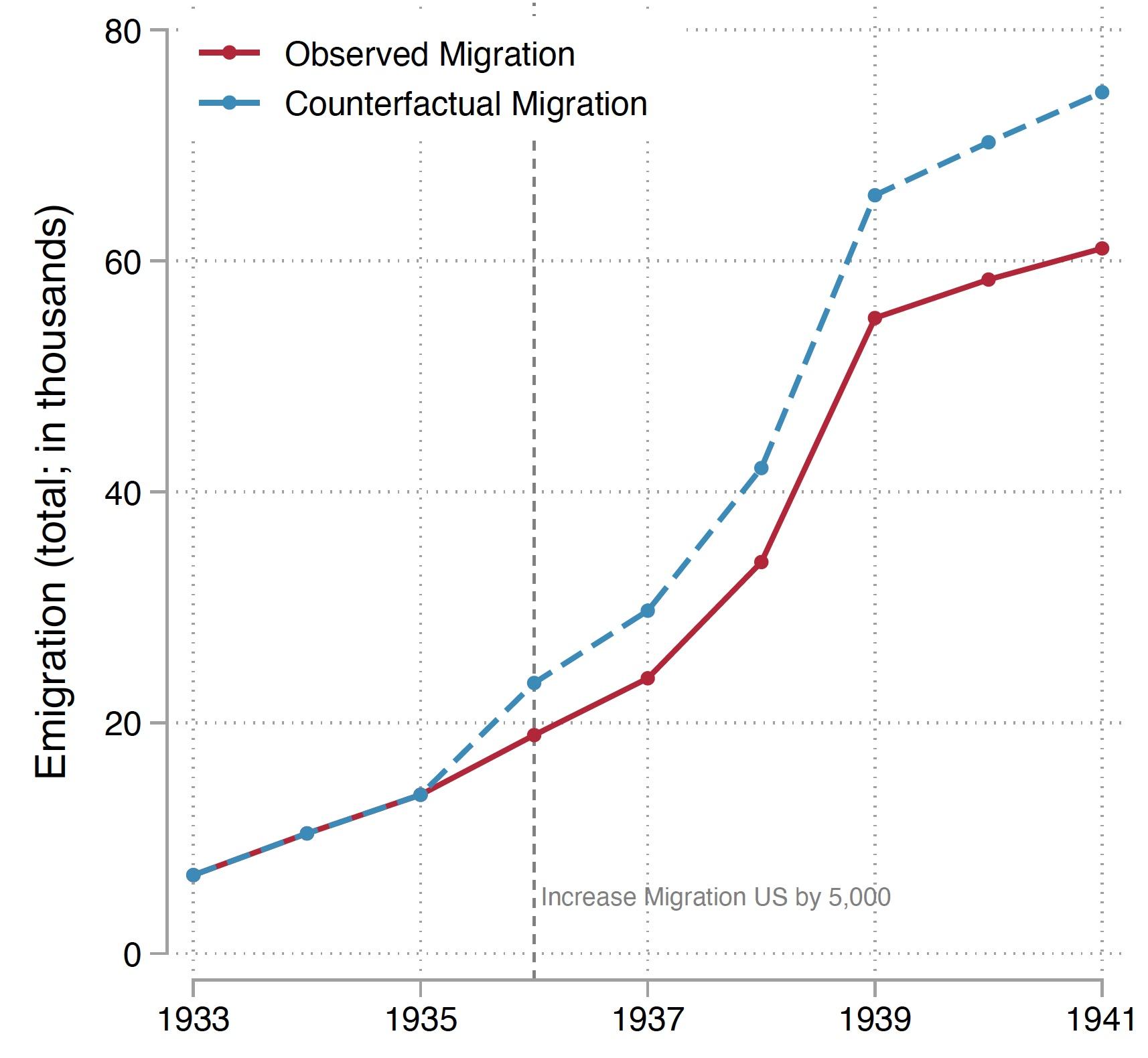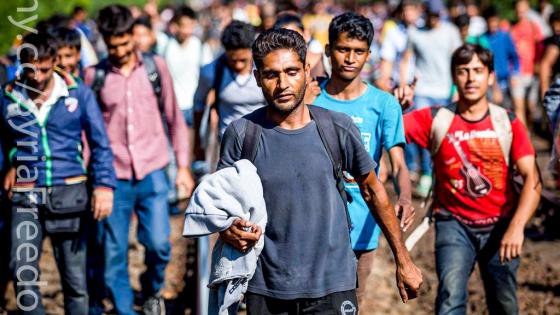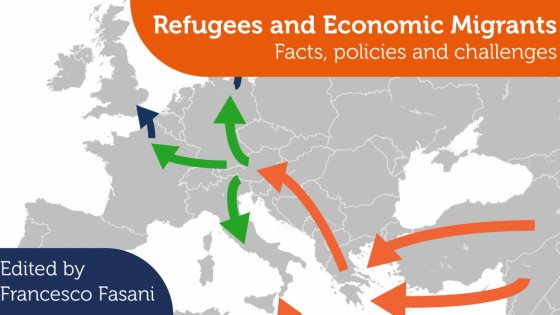Violence is a major driver of international migration. In 2019, 79.5 million people were forcibly displaced because of wars, civil conflicts, mass killings, and other forms of persecution (UNHCR 2020). The Syrian refugee crisis and the gloomy media coverage of asylum seekers trying to make their way to developed countries have led to fierce discussions about policies to manage refugee migration. Debate has revolved around the questions of limiting immigration in receiving countries and addressing the root causes of forced migration in origin countries.
The crisis also sparked interest among economists to study the economics and politics of refugee migration (Dustmann et al. 2016). Many important insights have been summarised in Fasani (2016) and in Becker and Ferrara (2019). For example, economists have provided evidence on the effects of refugees on host countries, such as labour markets (Braun and Mahmoud 2014, Fasani et al. 2018) or voting outcomes (Dustmann et al. 2018), as well as on the integration of refugees (Couttenier et al. 2019) and on the consequences for sending populations (Akbulut-Yuksel and Yuksel 2015).
Yet, a crucial question has largely been overlooked: how do individuals facing persecution and conflict decide to emigrate? To weigh the benefits of migrating against the costs, individuals who find themselves in a context of violence need to assess the danger to their lives, as well as the migration prospects in destination countries.
Empirically studying how individuals form their migration decisions in such circumstances is particularly challenging because researchers usually lack detailed data. Episodes of conflict and violence prevent the collection of precise information on the potential refugee population that would allow researchers to observe those who migrate and those who stay behind.
In a new paper (Buggle et al. 2020), we study the decision to emigrate of individuals confronted with persecution and violence. Our analysis sheds light on how social networks affect the decision to migrate and identifies peer effects in migration. We furthermore investigate how immigration policies in destination countries affect outmigration. Our analysis provides novel evidence that policies create multiplier effects as peers influence each other in the decision to emigrate.
We examine the emigration of Jewish individuals in Nazi Germany between 1933, the year Hitler seized power, and 1941, when emigration was officially forbidden. Jews formed a small and cohesive community in interwar Germany, representing less than 1% of the population. Social relationships between members of the community formed the cornerstone of Jewish life.
When state-led antisemitic persecution started in 1933, these contacts became even more important for sharing information about the dangers of the Nazi government and discussing migration plans and opportunities in potential destination countries. One of the many examples of such communication is found in the autobiography of Jewish emigrant Kurt Roberg, A visa or your life, where he writes: “My mother and her siblings had always kept in touch with weekly letters. Every one of the five sisters now considered the idea of leaving Germany” (Roberg 2009).
Our analysis builds on an individual-level dataset that records migration, persecution, and deportation of almost 300,000 Jewish people who lived in Germany during the 1930s. The dataset, known as the Resident List, was compiled by the German Federal Archives, on behalf of the Federal Government, in a decade-long collection effort (Zimmermann 2013). To this date, the dataset has not been examined quantitatively. The data enable us to rebuild social connections and analyse whether a person migrated, in which year, and to which foreign destination. Figure 1 illustrates the variation in the share of people that emigrated in 1938 across Jewish communities.
Figure 1 Share of Jewish people migrating in 1938 across German cities.
Source: Buggle et al. (2020).
The role of social networks in migration decisions
To study the role of peers in the decision to out-migrate, we reconstruct social networks based on an individual’s birth location and age cohort; thus, we assume that two people born in the same town and of comparable age have social ties.1 Our analysis shows that peers share information about persecution within their social networks: we observe that a person was much more likely to emigrate after her peers were detained by Nazi forces.
However, not all people responded in the same way. Detainment of peers led to stronger reactions from individuals who previously felt relatively safe, for example because of their strong identification with Germany and because they lived in a town where antisemitic attitudes were relatively limited.
Moreover, we quantify how much more an individual was likely to emigrate when her peers had already left Germany. One can think of two reasons: first, because a larger diaspora in a foreign country can assist in overcoming hurdles in the migration process and therefore facilitates outmigration to this country. We label this the diaspora effect, which has been documented extensively in previous studies (see for example Munshi 2003).
Second, if more peers are leaving then business opportunities shrink and the risk of social isolation increases, and peers’ migration sends a signal about how dangerous they perceive the situation to be. These factors can also increase the willingness of an individual to leave. We label this the exodus effect.
Analysing the destinations chosen by Jewish migrants in the 1930s allows us to empirically separate the diaspora from the exodus effects. We find that both played an important role in the decision of Jewish people to flee Germany.
Immigration policies
By October 1938, only 30% of Jewish people had left Germany. Besides imperfect information about the danger to them, historians attributed the relative low outmigration of Jewish people in the 1930s to the severe immigration restrictions in destination countries (Strauss 1980). Like today, most countries were extremely reluctant to admit refugees and imposed strict policies that limited immigration, including visa, quotas, and work restrictions. These policies were often backed by popular anti-immigrant sentiments, as Figure 2 illustrates for the US. In July 1938, 32 countries met at a conference in Evian, France, to discuss solutions to the Jewish refugee crisis without reaching an agreement.
Figure 2 US opinion poll of 20 January 1939
But how important were migration restrictions for the decision to emigrate? Under different policies, would more people have left Germany? We build and estimate a structural model of outmigration. This setup allows us to simulate various experiments with counterfactual history to quantify how alternative policies in destination countries would have affected migration flows.
Our simulations document for example that a unilateral opening of a border could have increased the total number of migrants that left Germany significantly, as emigrants have an influence on their peers and motivate them to migrate, too. As Figure 3 illustrates, allowing 5,000 more migrants to the US in 1936 would have increased total outmigration until 1941 by about 13,000 migrants.
Figure 3 Observed and counterfactual migration resulting from an increase of 5,000 migrants to the US in 1936
Source: Buggle et al. (2020).
Thus, removing migration restrictions does not just reallocate migrants to the country that opened its border but increases total emigration because of peer effects. The migration spillover implies that one extra refugee allowed into the US in 1936 would have increased future outmigration to all destinations by 0.45 extra refugees per year.
One instrument to help Jewish migrants that was discussed around the Evian conference was the provision of financial assistance. The British government, for example, considered opening its colonies to migrants and providing financial help through loans or subsidies to shipping lines that transported migrants overseas. Using actual historical ticket prices for boat trips from Europe to overseas destinations, we show that a subsidy of 50% of the ticket prices to all overseas destinations after 1936 would have increased outmigration by 19%. In a similar vein, we find that removing work restrictions for refugees in the recipient countries would have led to a 28% increase in Jewish migration out of Germany.
Concluding remarks
Although we study a period of persecution and displacement that happened 80 years ago, our findings also speak to modern refugee crises that share important characteristics with the situation of Jewish migrants: a lack of solidarity among destination countries, strong anti-immigrant sentiments, and a failure of international cooperation.
We provide new evidence that sharing information about persecution within social networks and the observation of peers’ migration can increase subsequent emigration. Aggregated, these effects can lead to unexpected and large refugee movements, especially in today’s world where communication via internet and mobile phones is easy and rapid.
Finally, the quantitative tools that we developed in the context of Jewish outmigration are quite portable. Therefore, they can be used to inform policymakers about the social dynamics in current episodes of forced migration that create multiplicative effects that should be considered when designing policies.
References
Akbulut-Yuksel, M, and M Yuksel (2015), “The long-term direct and external effects of Jewish expulsions in Nazi Germany”, American Economic Journal: Economic Policy 7(3): 58–85.
Becker, S O, and A Ferrara (2019), “Consequences of forced migration: A survey of recent findings”, Labour Economics 59: 1–16.
Buggle, J, T Mayer, S O Sakalli and M Thoenig (2020), “The refugee’s dilemma: Evidence from Jewish migration out of Nazi Germany”, CEPR Discussion Paper 15533.
Braun, S, and T O Mahmoud (2014), “The employment effects of immigration: Evidence from the mass arrival of German expellees in postwar Germany”, Journal of Economic History 74(1): 69–108.
Couttenier, M, V Petrencu, D Rohner and M Thoenig (2019), “The violent legacy of conflict: Evidence on asylum seekers, crime, and public policy in Switzerland”, American Economic Review 109(12): 4378–425.
Dustmann, C, F Fasani, T Frattini, Luigi Minale and Uta Schӧnberg (2016), “On the economics and politics of refugee migration“, VoxEU.org, 18 October.
Dustmann, C, K Vasiljeva and A P Damm (2018), “Refugee migration and electoral outcomes”, Review of Economic Studies 86(5): 2035–91.
Fasani, F (ed.) (2016), Refugees and economic migrants: Facts, policies and challenges, CEPR Press.
Fasani, F, T Frattini and L Minale (2018), “(The struggle for) refugee integration into the labour market: Evidence from Europe”, CEPR Discussion Paper 12718.
Munshi, K (2003), “Networks in the modern economy: Mexican migrants in the US labor market”, The Quarterly Journal of Economics 118(2): 549–99.
Roberg, K W (2009), A visa or your life!, AuthorHouse.
Strauss, H A (1980), “Jewish emigration from Germany: Nazi policies and Jewish responses (I)”, The Leo Baeck Institute Year Book 25(1): 313–61.
UNHCR (2020), “Global trends: Forced displacement in 2019”, United Nations High Commissioner for Refugees.
Zimmermann, N M (2013), “The list of Jewish residents in the German Reich 1933–1945”, Federal Archives Germany.
Endnotes
1 This is a reasonable assumption given that the Gemeinden (communities) were the focal point of Jewish social life and socialisation of children at the local level.
